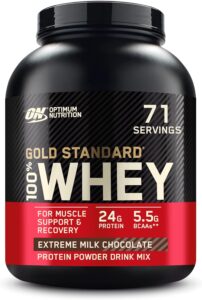
The Zone Diet is a popular eating plan that aims to balance the intake of macronutrients—carbohydrates, proteins, and fats—to regulate insulin levels and promote optimal health. Developed by Dr. Barry Sears in the mid-1990s, the Zone Diet emphasizes the importance of maintaining a specific ratio of these nutrients in every meal. This guide delves into the principles of the Zone Diet, its benefits and drawbacks, and provides a sample meal plan and food list to help you get started.
1. Introduction to the Zone Diet
What is the Zone Diet?
The Zone Diet is a dietary plan designed to regulate insulin production and promote optimal health by balancing the intake of macronutrients in a specific ratio. The primary goal of the diet is to keep the body in “the Zone,” a state where inflammation is minimized, and the body functions at its best. Dr. Barry Sears, the creator of the diet, argues that by controlling insulin levels, one can achieve significant health benefits, including weight loss, improved energy levels, and reduced risk of chronic diseases.
The 40-30-30 Rule
The cornerstone of the Zone Diet is the 40-30-30 rule, which dictates that every meal should consist of:
- 40% carbohydrates: Preferably low-glycemic index (GI) carbohydrates that do not spike blood sugar levels.
- 30% protein: Lean protein sources that help in muscle maintenance and satiety.
- 30% fat: Healthy fats that provide essential fatty acids and support various bodily functions.
This macronutrient ratio is believed to maintain steady insulin levels, preventing spikes and crashes that can lead to weight gain, fatigue, and other health issues.
How the Zone Diet Works
The Zone Diet operates on the principle of hormonal control. By balancing the intake of macronutrients in the prescribed ratio, the diet aims to control the body’s insulin and glucagon levels, hormones that regulate blood sugar and fat storage. Additionally, the diet emphasizes the importance of consuming anti-inflammatory foods, which are believed to reduce chronic inflammation—a key factor in many modern diseases.
The Zone Diet also introduces the concept of “blocks” to simplify meal planning. A block represents a specific amount of carbohydrates, proteins, and fats. Depending on your daily caloric needs, you would consume a certain number of blocks per day, spread across your meals and snacks.
2. Benefits of the Zone Diet
Weight Loss
One of the primary reasons people turn to the Zone Diet is for weight loss. By maintaining a balanced intake of macronutrients, the diet helps prevent overeating and supports fat loss while preserving muscle mass. The emphasis on low-GI carbohydrates also helps stabilize blood sugar levels, reducing hunger and cravings.
Improved Energy Levels
The Zone Diet promotes sustained energy levels throughout the day by preventing the blood sugar spikes and crashes associated with high-carbohydrate diets. The balanced macronutrient ratio ensures that your body has a steady supply of energy, which can lead to improved focus, productivity, and overall vitality.
Reduced Inflammation
Chronic inflammation is linked to various health problems, including heart disease, diabetes, and arthritis. The Zone Diet encourages the consumption of anti-inflammatory foods, such as fruits, vegetables, and omega-3 fatty acids, which can help reduce inflammation and lower the risk of these conditions.
Better Mental Clarity
The stable blood sugar levels and balanced nutrient intake promoted by the Zone Diet are believed to enhance cognitive function. Many followers of the diet report better mental clarity, improved memory, and a sharper focus.
Enhanced Athletic Performance
Athletes often adopt the Zone Diet to improve their performance. The balanced intake of proteins, carbohydrates, and fats supports muscle recovery, sustained energy, and optimal body composition, all of which are crucial for athletic performance.
3. Disadvantages of the Zone Diet
Complexity in Meal Planning
One of the main challenges of the Zone Diet is its complexity. The need to measure and balance macronutrients in every meal can be daunting for beginners. The concept of blocks, while helpful, requires careful calculation and planning, which can be time-consuming.
Potential Nutrient Deficiencies
While the Zone Diet encourages a variety of foods, the restrictive nature of the diet can sometimes lead to nutrient deficiencies. For example, the emphasis on low-GI carbohydrates might limit the intake of certain fruits and whole grains, potentially reducing fiber and nutrient intake.
Restrictive Nature
The Zone Diet can be restrictive, especially for those who enjoy a wide variety of foods or have specific dietary preferences. The need to adhere strictly to the 40-30-30 ratio may make social eating and dining out more challenging.
Long-Term Sustainability
While many people experience initial success with the Zone Diet, maintaining it over the long term can be difficult. The diet’s complexity, along with the need for constant meal planning and preparation, may lead to burnout and a return to less structured eating habits.
4. The Zone Diet Food List
To succeed on the Zone Diet, it’s crucial to know which foods are allowed and which should be avoided. Here’s a comprehensive list:
Approved Proteins
- Lean Meats: Chicken breast, turkey, lean beef, pork tenderloin
- Fish: Salmon, tuna, cod, halibut
- Eggs: Whole eggs, egg whites
- Low-fat Dairy: Greek yogurt, cottage cheese, skim milk
- Plant-Based Proteins: Tofu, tempeh, seitan
Carbohydrates
- Vegetables: Leafy greens, broccoli, cauliflower, zucchini, bell peppers
- Fruits: Berries, apples, oranges, pears
- Whole Grains: Oats, quinoa, barley (in moderation)
- Legumes: Lentils, chickpeas, black beans
- Nuts and Seeds: Almonds, chia seeds, flaxseeds
Fats
- Healthy Oils: Olive oil, avocado oil, coconut oil
- Nuts and Seeds: Almonds, walnuts, chia seeds, flaxseeds
- Avocado
- Fatty Fish: Salmon, mackerel, sardines
Foods to Avoid
- Refined Carbohydrates: White bread, pastries, sugary cereals
- High-GI Fruits: Bananas, pineapples, watermelon
- Sugary Snacks: Candy, cookies, cakes
- Trans Fats: Margarine, processed snacks
- Sugary Drinks: Soda, fruit juice with added sugar
5. Sample Zone Diet Meal Plan
Below is a sample meal plan that follows the Zone Diet’s principles, designed to provide balanced nutrition throughout the day.
Breakfast
- Meal: Scrambled eggs with spinach, avocado, and a side of berries
Macronutrient Breakdown:
- Protein: Eggs (30% of the meal)
- Carbohydrates: Spinach, berries (40% of the meal)
- Fat: Avocado, olive oil (30% of the meal)
Lunch
- Meal: Grilled chicken salad with mixed greens, cherry tomatoes, cucumbers, and a vinaigrette dressing
Macronutrient Breakdown:
- Protein: Grilled chicken (30% of the meal)
- Carbohydrates: Mixed greens, tomatoes, cucumbers (40% of the meal)
- Fat: Olive oil in the dressing, avocado (30% of the meal)
Dinner
- Meal: Baked salmon with quinoa and steamed broccoli
- Macronutrient Breakdown:
- Protein: Salmon (30% of the meal)
- Carbohydrates: Quinoa, broccoli (40% of the meal)
- Fat: Olive oil used in cooking (30% of the meal)
Snacks
- Option 1: Greek yogurt with a handful of almonds
- Option 2: Apple slices with almond butter
Macronutrient Breakdown:
- Protein: Greek yogurt/almond butter (30% of the snack)
- Carbohydrates: Apple slices (40% of the snack)
- Fat: Almonds/almond butter (30% of the snack)
The Zone Diet is a well-structured plan that offers numerous benefits, particularly in terms of weight management, energy levels, and inflammation reduction. However, its complexity and restrictive nature can pose challenges for long-term adherence. Those interested in the diet should carefully consider their ability to maintain the precise macronutrient ratios and the potential need for ongoing meal planning. By understanding the core principles, benefits, and drawbacks of the Zone Diet, you can make an informed decision about whether this dietary approach aligns with your health goals and lifestyle.
This article provides an in-depth look at the Zone Diet, covering everything from its foundational principles to a practical meal plan, helping you determine if it’s the right fit for your nutritional needs.










